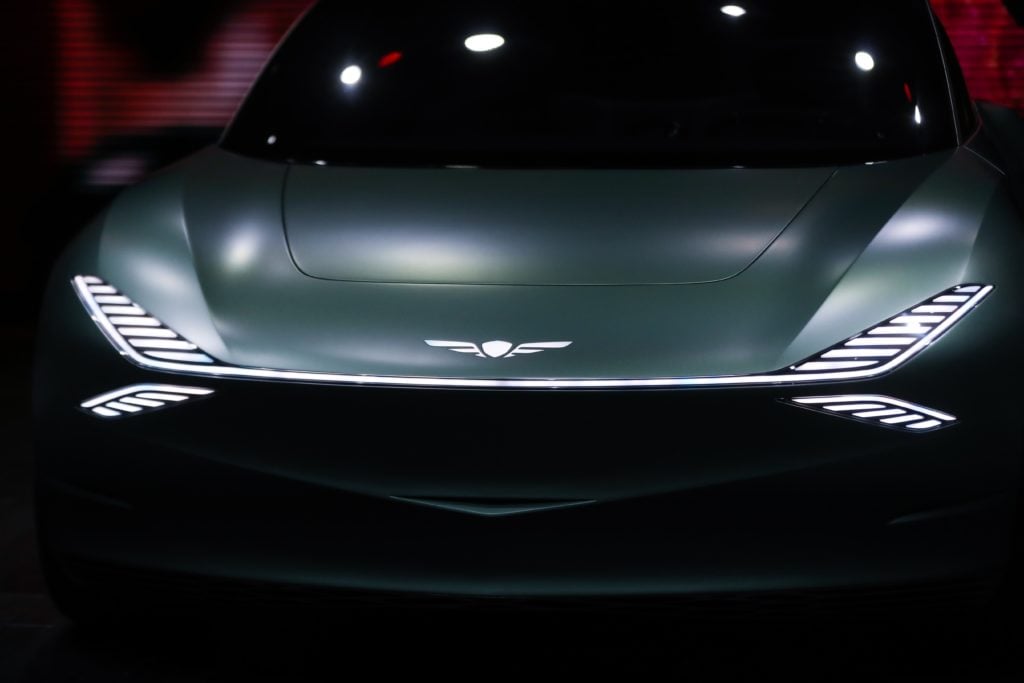Jaguar design director Ian Callum always wanted to make a beautiful family car featuring a cab-forward look—a shorter front end, larger windshield, and roomier interior—without giving up the backseat. There was just one problem: where to put the engine.
For most of automotive history, car designers had essentially two options, in the front or the back, and in order to move the interior cabin forward, the engine had to take the backseat, leaving little room for the family (and a lot to be desired). As Callum explained, “You can’t put an engine in the back of a four or a five-seater because there are people there.”
Until recently, Callum’s dream model seemed impossible to create. Enter electrification, which has changed all the rules. Without bulky, gas-burning engines to worry about in electric models, car designers like Callum now have a lot more space with which to innovate—a trend that seems to be catching on fast, and one that dominated in the lineup of new models presented this week and last at the annual New York International Auto Show.
“With electric cars, you get so much more freedom to do what you need to do in terms of shape, profile, and silhouette,” Callum said during his victory speech, after his dream car, the finally-realized Jaguar I-Pace, won multiple World Car Awards, including World Car of the Year, Car Design of the Year, and Green Car of the Year. “Electrification has given us the opportunity to do something unique and quite different. And I think this [award] shows that it’s something that people actually like as well.”
Jaguar’s first all-electric vehicle, the I-Pace, is built on a skateboard-shaped powertrain, with a flat 90-kilowatt-hour, lithium-ion battery pack under the floor between the front and rear axles. The lack of a traditional combustion engine under the hood allowed Callum’s team to give it that desired cab-forward look, with a roomy backseat area to boot. In fact, the I-Pace seats up to five, with extra space for cargo.
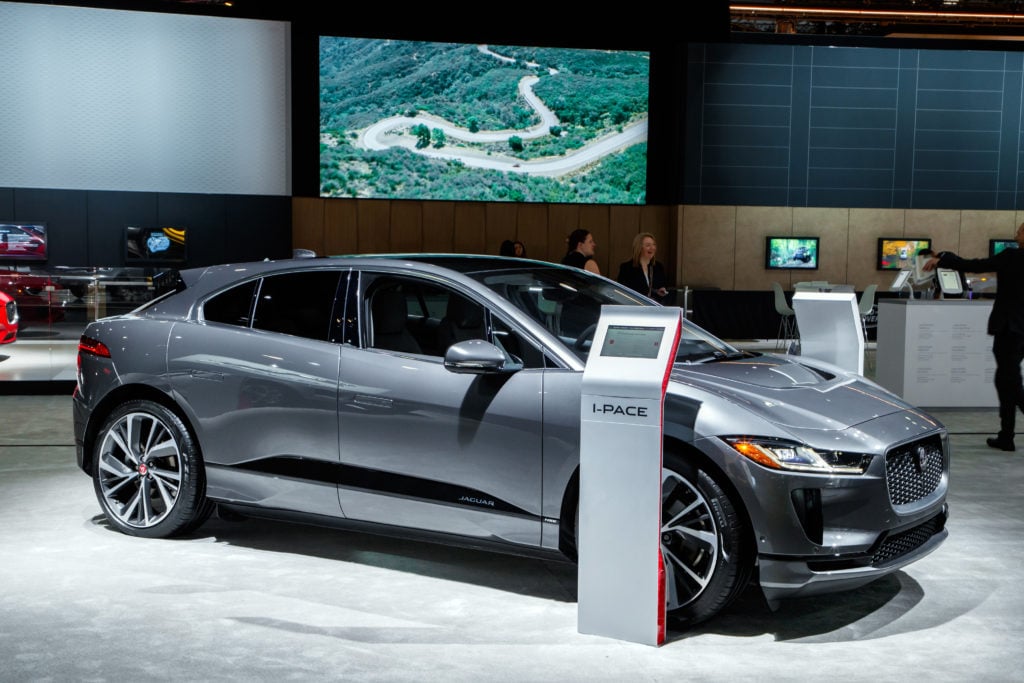
The Jaguar I-Pace, The 2019 World Car of the Year, sits on stage at the New York International Auto Show at the Jacob K. Javits Convention Center. Photo courtesy of Jaguar.
Other automakers of all kinds are also plugging into the unique design possibilities of battery power like never before, and for good reason: while electric vehicles remain a small segment of the overall car market—only two million out of the nearly 86 million vehicles sold globally last year—this fast-growing sector still generates the most excitement from the general public. The purely electric Tesla Model 3 was, for example, the most talked-about car brand in all of 2018, for better or worse, according to industry data.
This year’s auto show featured more than 40 different electric models, from compact economy cars, and luxury SUVs, to supercharged race cars, including the first all-electric model from Mercedes-Benz, the EQC, a luxurious crossover SUV to rival the Jaguar I-Pace and fellow World Car Awards finalist, Audi E-tron. During the show, Mercedes-Benz announced its plans to roll out as many as 10 different, purely electric models in the coming years, representing as much as 15 to 25 percent of its total sales by 2025.
Perhaps the most eye-catching electric debut, however, came from the Genesis Mint, a sporty, pint-sized two-seat concept designed specifically for navigating crowded cities. Genesis senior vice president Manfred Fitzgerald said the skateboard-style battery-power structure allowed the automaker to “totally redefine the space inside the vehicle,” with swiveling bench seats and a “very spacious interior,” especially for such a small car. The Mint also featured tiny winged rear doors that allow passengers to store their belongings from the side, rather than the back. “Why do you have to go around the car to put your bags away?” Fitzgerald asked. “This is our answer to that.”
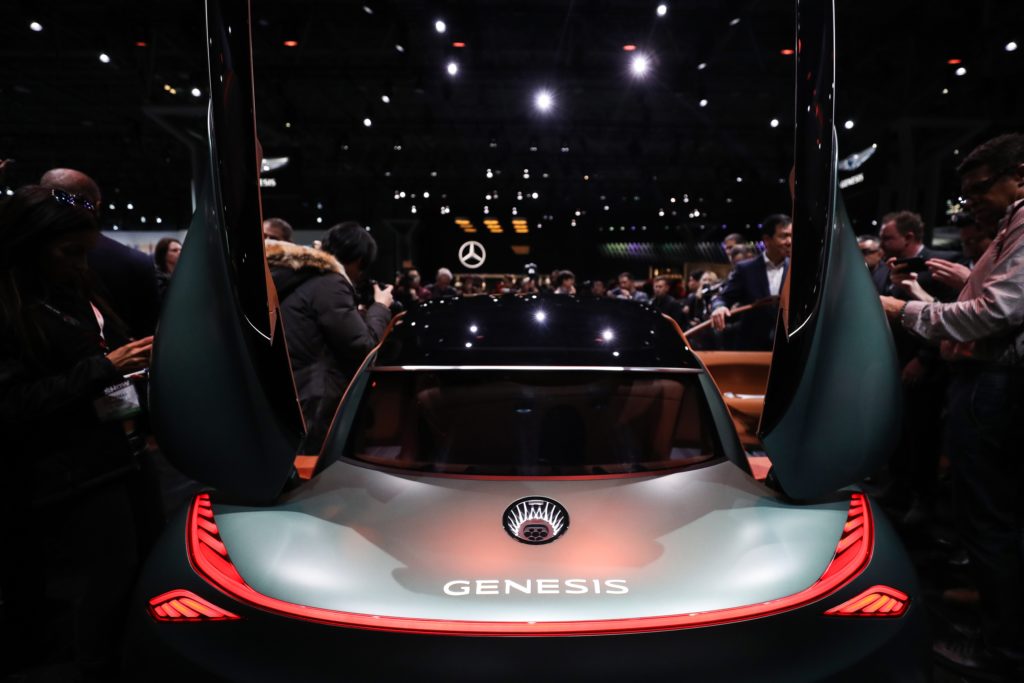
The Genesis Mint model. Photo by Atilgan Ozdil via Getty Images.
A handful of stylish new boutique brands also showcased their own electric concepts, including the Michigan-based startup Rivian, whose battery-powered luxury SUVs and upscale pickup trucks challenge the Jaguar I-Pace in price. Jeff Hammond, Rivian’s vice president for vehicle design, said the flat battery setup gave his team all kinds of options for wheel and windshield placement. “That’s the beauty of this flexible platform,” he said.
Each Rivian display model featured a bathtub-sized storage trunk up front, in place of the traditional engine. “Somebody sat in it earlier and wanted a picture,” Hammond noted. The truck, meanwhile, featured an additional side bin, located under the backseat and accessible from either side, which allows for extra storage. This so-called “gear tunnel,” as Rivian calls it, makes use of empty space where transmission equipment is usually located in a gas-powered truck.
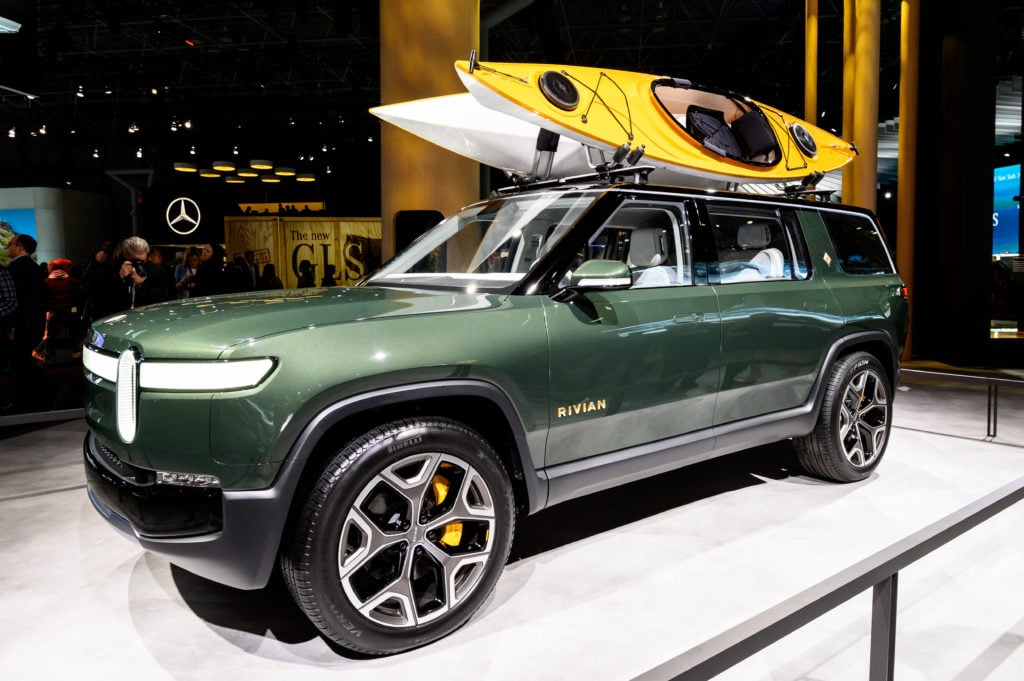
The Rivian R1S model. Photo Photo by Michael Brochstein/SOPA Images/LightRocket via Getty Images.
The California-based Mullen Technologies, meanwhile, rolled out a somewhat different style of electric car, the Chinese-designed Qiantu K50 sports car, which the company intends to produce for sale in North America sometime soon. Unlike the many skateboard-format electric cars on the market, the Qiantu instead runs on a T-shaped battery, with two lithium-ion modules extending down the middle of the car and another eight spread out across the back. “This offers designers flexibility in terms of aspect ratio,” said Mullen chief engineer Frank McMahon. The rear-heavy Qiantu K50 is a full inch and a half wider than a Corvette, with massive curvy haunches over the back wheels. While the T-shaped power structure offers more legroom in the front, it leaves very little space for storage in the back. The tiny rear trunk can fit perhaps two carry-on bags, at best.
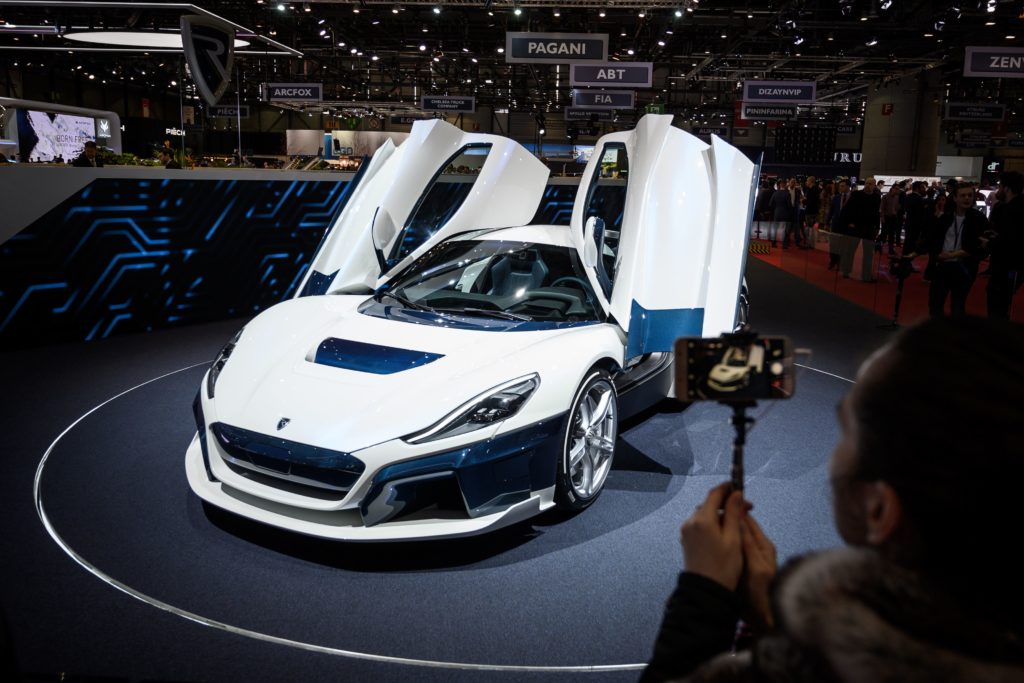
The Rimac C_Two model. Photo by Fabrice Cofferini/AFP via Getty Images
When it comes to both design and performance, however, it’s hard to beat the Rimac C_Two. The latest version of the world’s first fully electric supercar not only looks cool—with big butterfly doors, and the Croatian company’s signature necktie-shaped graphics along the sides—it also possesses incredible acceleration. The car is reportedly capable of racing from 0 to 60 mph in under two seconds, though perhaps not as ceremoniously as some racing fans would like. Mate Rimac, its 31-year-old wunderkind creator, predicts that they’ll miss hearing the distinctive engine roar that isn’t possible to recreate with electric motors. “There is noise,” he says. “It’s just different.” At the same time, what the car lacks in sound, it more than makes up for in performance. “You can do things that were not possible with traditional powertrains.” Only 150 of the ultra-fast electric cars will be made, with prices starting at around $2 million.
“It’s difficult to get yourself back in the mindset of 10 years ago, when electric cars were considered dull and ugly and something that you really don’t want to have,” Rimac said of the sector’s slow, but steady evolution. “When people think about electric cars today, they see that things have changed.”
